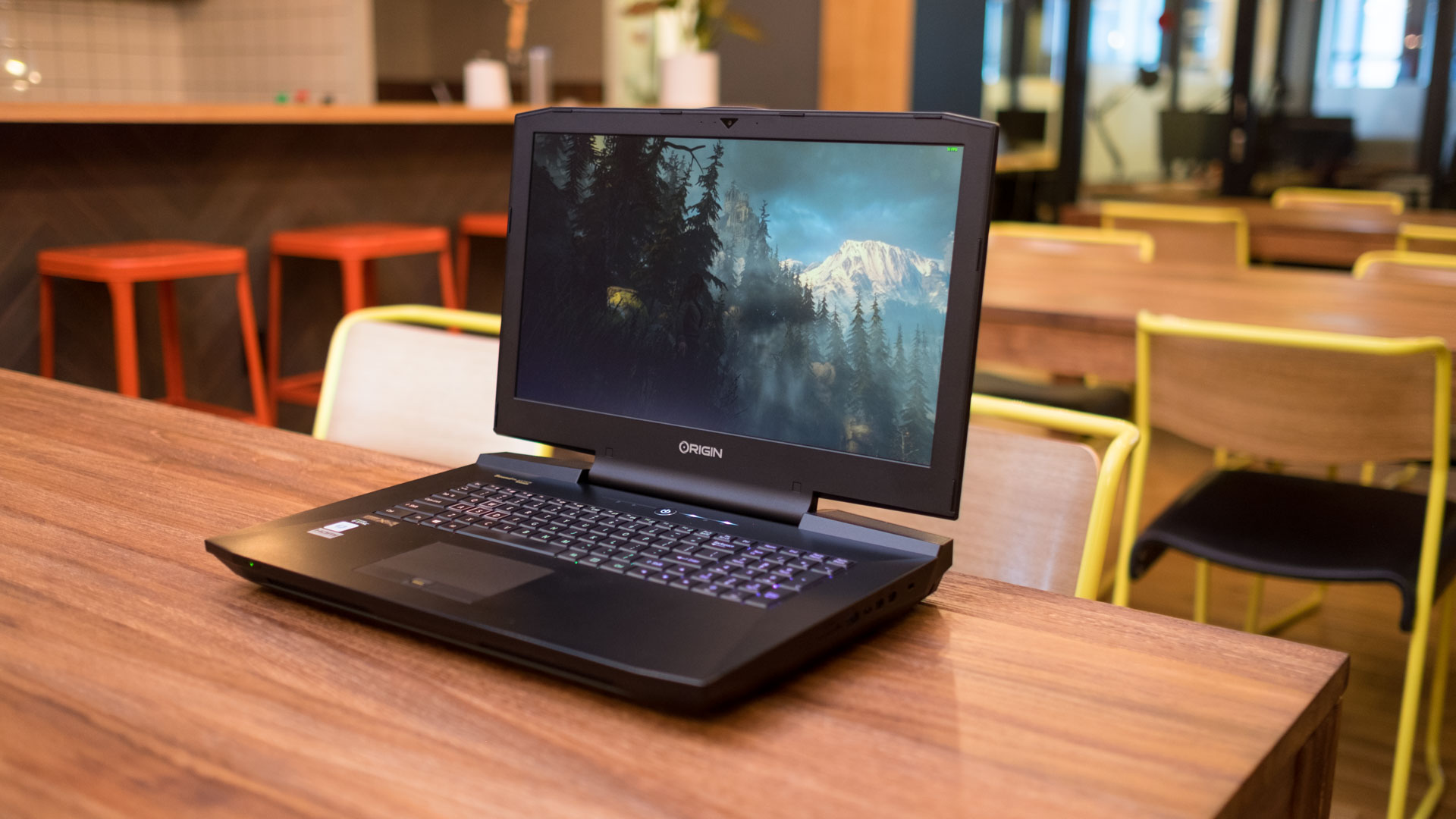Why you can trust TechRadar
You'll never feel a lack of power with the Origin EON17-SLX – I mean, how could you with this over-the-top setup? It absolutely decimates games at Full HD, allowing you to run them on max settings without having to worry about dipping frame rates.
In fact, I never saw the frame rate dip below 75 frames per second, matching the 75hz refresh rate of the display. That is, until I turned on the taxing SSAA anti-aliasing option in Rise of the Tomb Raider.
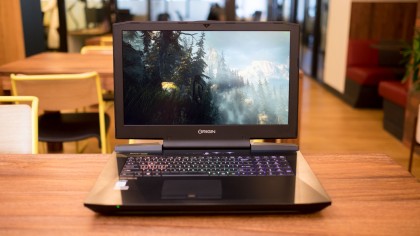
Benchmarks
Here's how the Origin EON17-SLX performed in our suite of benchmark tests:
- 3DMark: Cloud Gate: 14,980; Sky Diver: 15,919; Fire Strike: 12,041
- Cinebench CPU: 970 points; Graphics: 74.72 fps,
- GeekBench: 4,704 (single-core); 18,775 (multi-core)
- PCMark 8 (Home Test): 4,700 points
- PCMark 8 Battery Life: 2 hours and 11 minutes
- Middle Earth: Shadow of Mordor (1080p, Ultra): 100 fps; (1080p, Low): 209 fps
- GTA V: (1080p, Ultra): 41 fps; (1080p, Low): 172 fps
You better believe this machine can bench, lift, curl or just toss away any test you throw at it. The graphical and processing performance you can squeeze out of this 17-inch notebook is almost excessive when you look at PCMark scores of 4,700 points and a 12,041-point 3DMark result.
The desktop Nvidia GTX 980 might be a small part, but it gives the EON7-SLX a noticeable step up over its Nvidia GTX980M-powered relative, the EON17-X. Here's a quick look at how that laptop performed in the same tests:
- 3DMark: Cloud Gate: 28,335; Sky Diver: 24,992; Fire Strike: 8,811
- Cinebench CPU: 878 points; Graphics: 131 fps,
- GeekBench: 4,319 (single-core); 16,921 (multi-core)
- PCMark 8 (Home Test): 4,703 points
- PCMark 8 Battery Life: 2 hours and 17 minutes
- Middle Earth: Shadow of Mordor (1080p, Ultra): 73 fps; (1080p, Low): 163 fps
- Metro: Last Light (1080p, Ultra): 39 fps; (1080p, Low): 154 fps
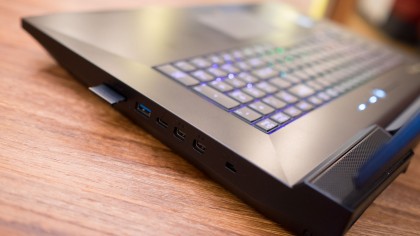
The performance discrepancy between mobile and desktop-grade parts grows even wider when looking at the MSI GT80 Titan's results. Even with the system fully loaded with a 2.6GHz Intel Core i7-4720HQ processor and two Nvidia GTX 980M chips, it could only achieve a PCMark 8 Fire Strike scores of 4,034 and 11,770 points, respectively.
Interestingly, MSI GT80 performed better in the middling to low-end graphics stressing benchmarks. This is likely due to the dual 980M's giving the Titan double the amount of memory compared to Origin's system This means the GT80 will be better at certain tasks, such as Photoshop and 3D modeling, but not the most graphically intense games.
The PC Specialist Octane II Pro proves to be a more formidable challenger, but that's obvious because it's outfitted with nearly the same configuration. Regardless, the PC Specialist build rendered a lower Fire Strike score of 11,103 points. Surprisingly, it trumped the SLX in the PCMark 8 benchmark test, where it scored 4,972 points.
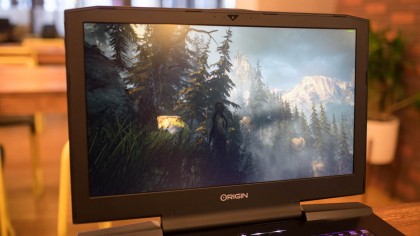
On the big screen
Though my review sample only came with a 1080p display, leaving me wanting for a higher-res 4K panel, I'm largely pleased with its image quality. Origin has formulated the perfect anti-glare coating that is effective without washing out colors or contrast.
That said, colors don't exactly pop off the screen, but they're present and strong. More importantly, the display renders plenty of contrast, which is indispensable for exploring the dark caverns in Rise of the Tomb Raider – or finding campers lurking in the shadows.
I was also impressed by the 2.1 stereo sound setup on the Origin EON17-SLX. There are two large, neatly placed speakers above the keyboard, and with all the given space, the drivers have enough room to vibrate without creating any nasty distortion.
There's also a subwoofer tucked on the underside of the laptop, and you can feel the notebook hop up slightly when you're playing bass heavy songs, like the Mortal Kombat Annihilation movie theme – don't ask why it was playing.
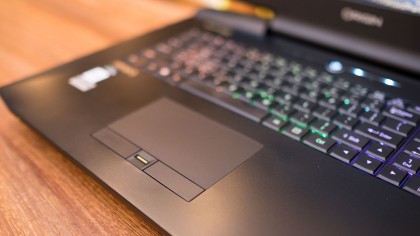
Small on battery
From the 17-inch screen, booming sound to the desktop hardware, this Origin machine would have been big on everything if it weren't for battery life. From my testing, the run time you can squeeze out of this machine is roughly two and a half hours (techradar's standard movie test drew out 2 hour and 29 minutes.
Of course, this is a pretty poor showing for a laptop, but it's hard to call the SLX portable at all when it's built with two desktop parts.
Still, the Octane II Pro performed better, getting through techradar's 1080p video loop test at 2 hours and 50 minutes. The MSI GT80 Titan, meanwhile, lasted for 2 hours and 8 minutes on the lightest workload I could give it.
Kevin Lee was a former computing reporter at TechRadar. Kevin is now the SEO Updates Editor at IGN based in New York. He handles all of the best of tech buying guides while also dipping his hand in the entertainment and games evergreen content. Kevin has over eight years of experience in the tech and games publications with previous bylines at Polygon, PC World, and more. Outside of work, Kevin is major movie buff of cult and bad films. He also regularly plays flight & space sim and racing games. IRL he's a fan of archery, axe throwing, and board games.
